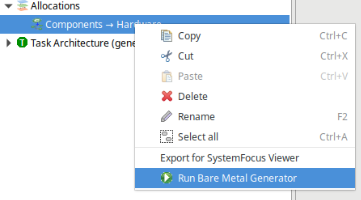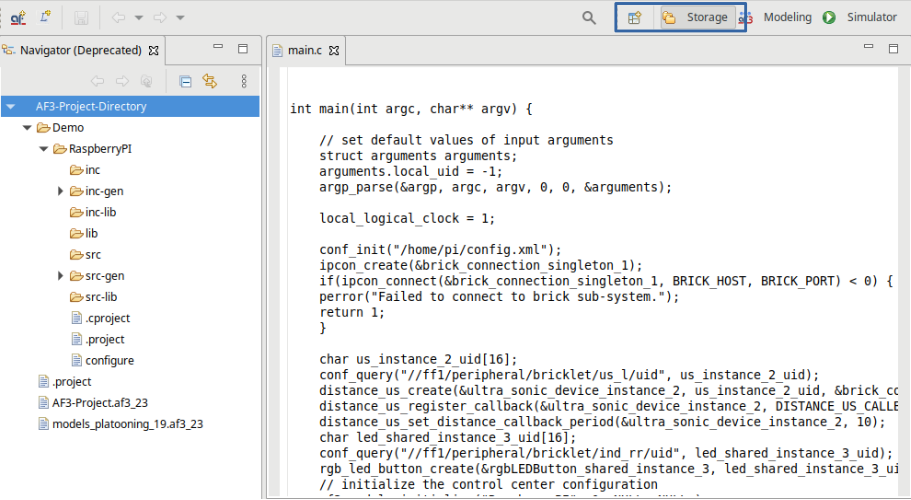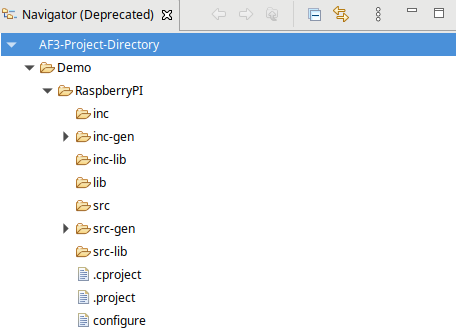Generating Code
AutoFOCUS supports to generate C code from component architectures and an associated platform allocation definition. You can start the code generation by using the context menu of the allocations.

You are offered the option to select a target folder, which has to be in the Eclipse workspace but can not be the root directory.
(Please use the Storage-Perspective to create Eclipse workspace projects and folders.
If you don't already have the Storage-Perspective, you can add it by pressing the
 button near to the Perspective buttons, select "Other..." and then select "Storage".).
button near to the Perspective buttons, select "Other..." and then select "Storage".).

Once the code generation is complete, you can see the result in the Storage-Perspective. The following picture shows the result of the code generation.

After you have used the deployment generator, you will get a single folder for each execution unit as well as each unit's synthesis code (system.h, system.c) and supplementary files (e.g. Makefile).

Please take care to manually delete your code-directories in the Storage-Perspective before you generate code for another project. Otherwise the new code files will simply be added to the existing ones.
To compile a model of the RaspberryPi platform architecture simply copy the generated code to the target hardware and run ./configure && make in the root directory. To launch the model run the resulting executable in the build directory.
To run the model the libaf3pihal library has to be installed.
Depending on the deployed Sensors and Actuators some additional libraries have to be installed on the hardware as well.
- Bricklet:
libbrick,libconf - Motor Control:
libvesc,libconf - Camera Server:
libconf - Rumblepad:
libconf